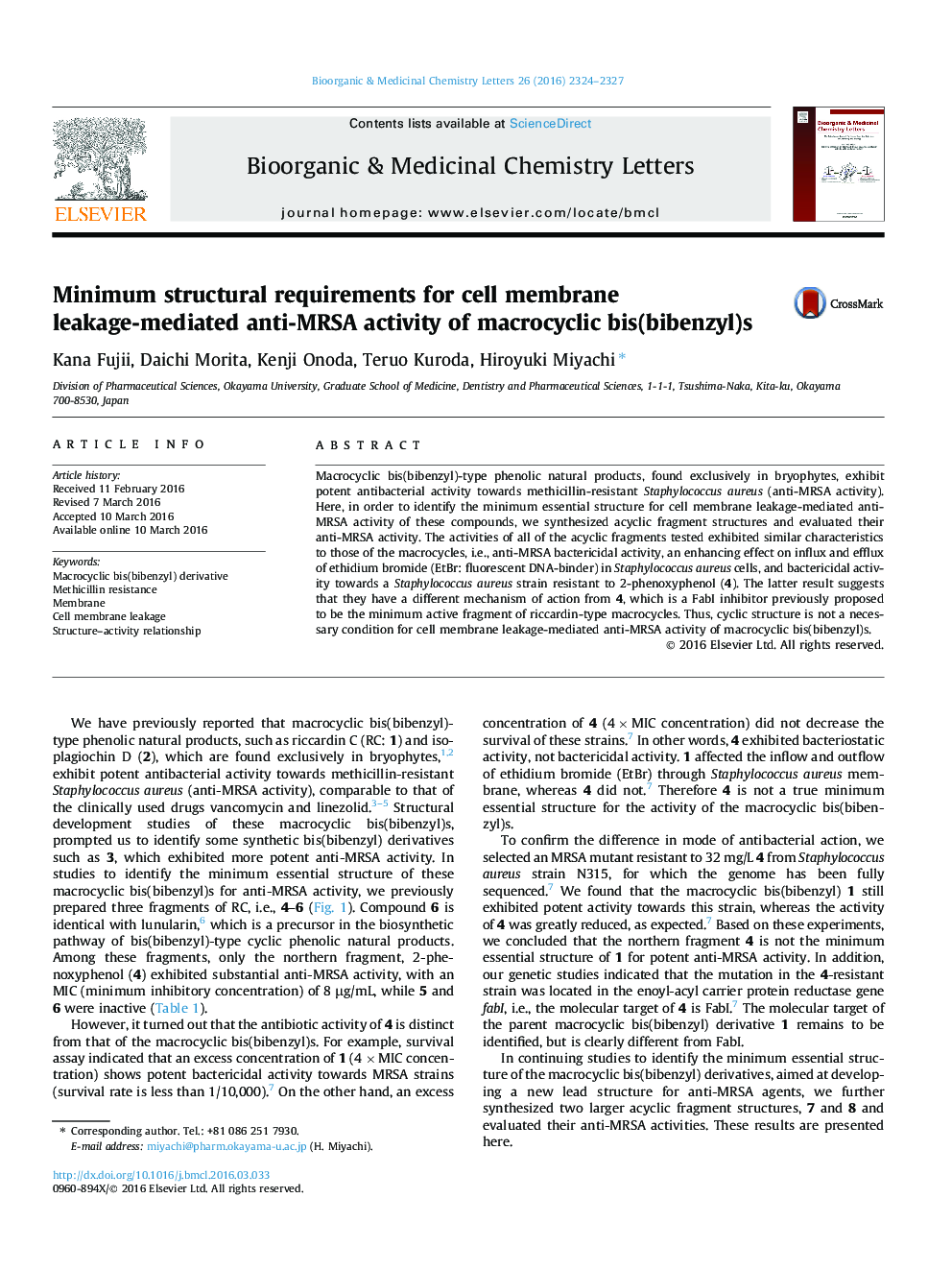| Article ID | Journal | Published Year | Pages | File Type |
|---|---|---|---|---|
| 1368616 | Bioorganic & Medicinal Chemistry Letters | 2016 | 4 Pages |
Macrocyclic bis(bibenzyl)-type phenolic natural products, found exclusively in bryophytes, exhibit potent antibacterial activity towards methicillin-resistant Staphylococcus aureus (anti-MRSA activity). Here, in order to identify the minimum essential structure for cell membrane leakage-mediated anti-MRSA activity of these compounds, we synthesized acyclic fragment structures and evaluated their anti-MRSA activity. The activities of all of the acyclic fragments tested exhibited similar characteristics to those of the macrocycles, i.e., anti-MRSA bactericidal activity, an enhancing effect on influx and efflux of ethidium bromide (EtBr: fluorescent DNA-binder) in Staphylococcus aureus cells, and bactericidal activity towards a Staphylococcus aureus strain resistant to 2-phenoxyphenol (4). The latter result suggests that they have a different mechanism of action from 4, which is a FabI inhibitor previously proposed to be the minimum active fragment of riccardin-type macrocycles. Thus, cyclic structure is not a necessary condition for cell membrane leakage-mediated anti-MRSA activity of macrocyclic bis(bibenzyl)s.
Graphical abstractFigure optionsDownload full-size imageDownload as PowerPoint slide
